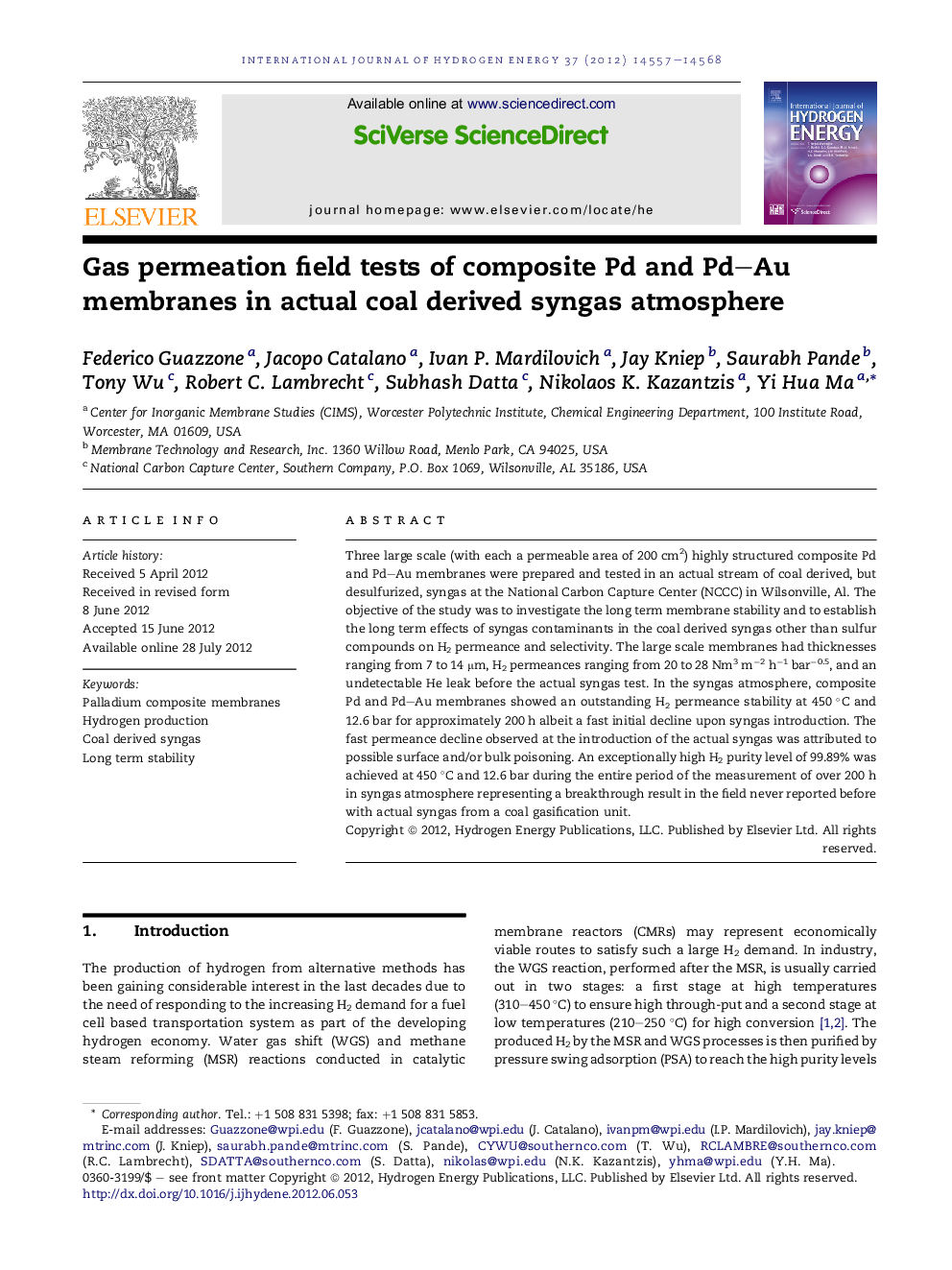| Article ID | Journal | Published Year | Pages | File Type |
|---|---|---|---|---|
| 1274804 | International Journal of Hydrogen Energy | 2012 | 12 Pages |
Three large scale (with each a permeable area of 200 cm2) highly structured composite Pd and Pd–Au membranes were prepared and tested in an actual stream of coal derived, but desulfurized, syngas at the National Carbon Capture Center (NCCC) in Wilsonville, Al. The objective of the study was to investigate the long term membrane stability and to establish the long term effects of syngas contaminants in the coal derived syngas other than sulfur compounds on H2 permeance and selectivity. The large scale membranes had thicknesses ranging from 7 to 14 μm, H2 permeances ranging from 20 to 28 Nm3 m−2 h−1 bar−0.5, and an undetectable He leak before the actual syngas test. In the syngas atmosphere, composite Pd and Pd–Au membranes showed an outstanding H2 permeance stability at 450 °C and 12.6 bar for approximately 200 h albeit a fast initial decline upon syngas introduction. The fast permeance decline observed at the introduction of the actual syngas was attributed to possible surface and/or bulk poisoning. An exceptionally high H2 purity level of 99.89% was achieved at 450 °C and 12.6 bar during the entire period of the measurement of over 200 h in syngas atmosphere representing a breakthrough result in the field never reported before with actual syngas from a coal gasification unit.
► Pd–Au membranes were tested in an actual coal derived syngas (desulfurized). ► Membranes were stable for over 200 h at 450 °C and 12.6 bar. ► H2 purity levels of 99.89% were achieved for over 200 h in syngas. ► Hydrogen permeance decreased upon syngas introduction. ► Initial permeance decline suggested the presence of contaminants other than sulfur.
